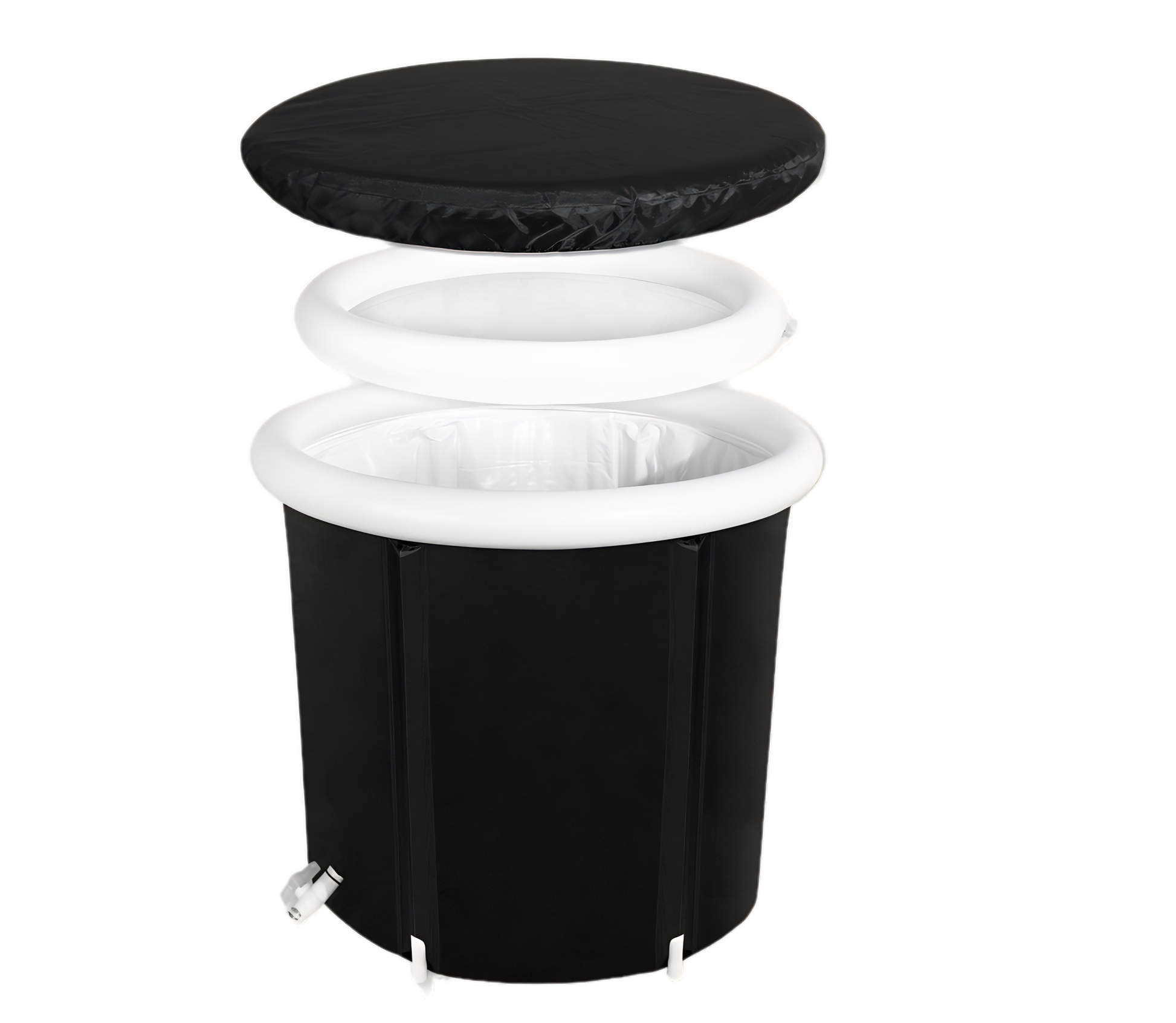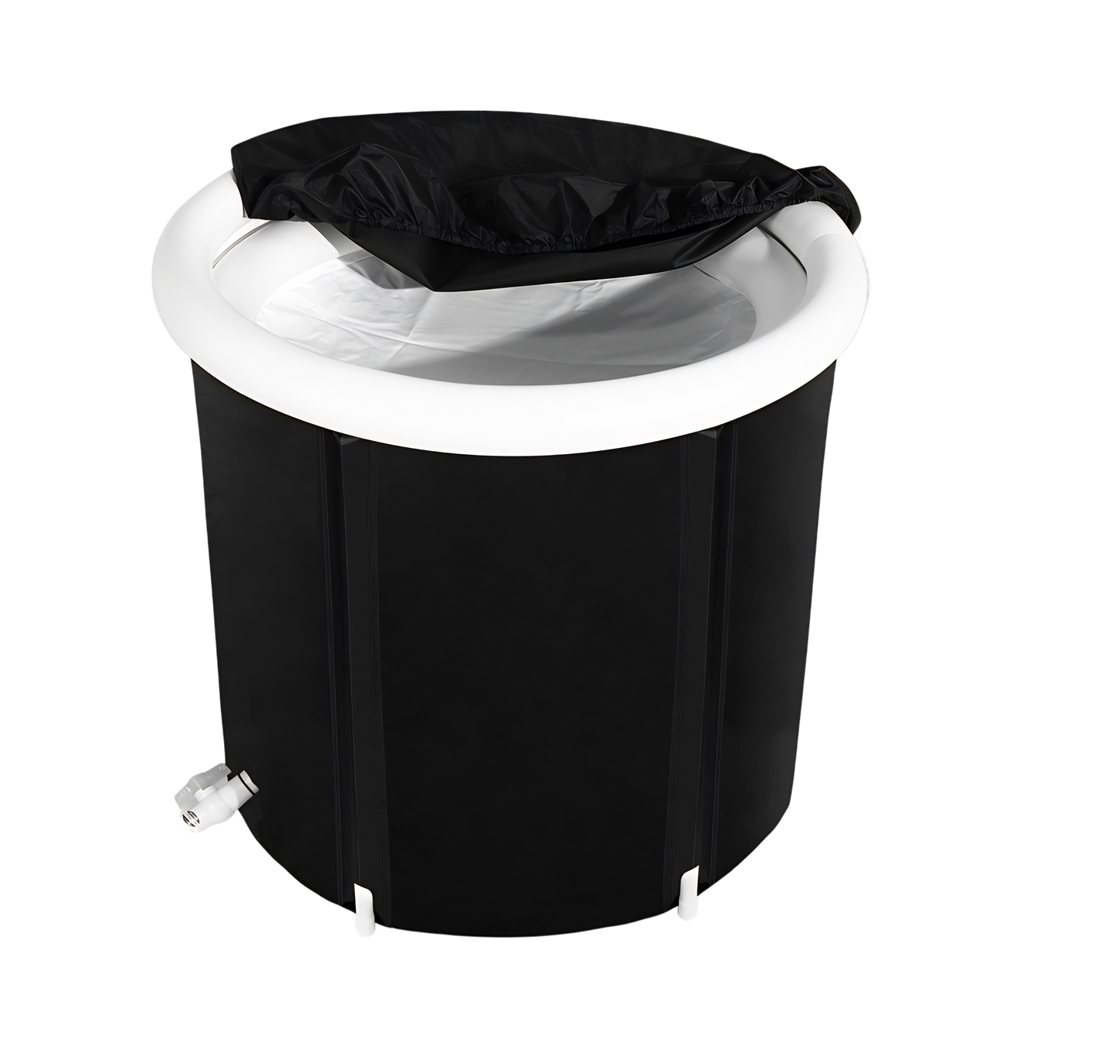Key Takeaways
- Ice baths can enhance blood circulation, potentially aiding in transporting waste products to detoxifying organs. Cold water immersion post-exercise might help flush out waste products like lactic acid, indirectly supporting detoxification.
- Ice baths may stimulate the lymphatic system, crucial for waste removal, and boost white blood cell production, strengthening the body's defense against harmful substances.
- While ice baths offer various health benefits, their direct role in toxin removal is still under research.
Introduction
The ancient practice of immersing oneself in cold water, commonly known as ice baths or cold water immersion, has been a topic of intrigue and research for centuries. From athletes swearing by its recovery benefits to wellness enthusiasts advocating for its potential detoxifying effects, ice baths have been at the center of many health discussions. One claim that has gained traction over the years is the idea that ice baths can effectively remove toxins from the body. But is there any scientific merit to this claim? This article aims to provide a comprehensive analysis of the evidence.
Understanding Toxins: What Are They?
Toxins can be broadly categorized into two types: endotoxins and exotoxins. Endotoxins are waste products produced within our bodies from processes like metabolism. Exotoxins, on the other hand, are harmful substances we might ingest, inhale, or absorb from our environment, such as pollutants, chemicals, and certain foods. Our bodies are naturally equipped with systems, primarily the liver and kidneys, to detoxify and eliminate these toxins. But can external practices like ice baths enhance this process?
The Science Behind Cold Water Immersion and Detoxification
While the direct research on whether ice baths remove toxins is limited, several studies have delved into the physiological effects of cold exposure. One consistent finding across these studies is the significant increase in blood circulation. This enhanced circulation can potentially aid in transporting waste products more efficiently to the organs responsible for their elimination.
In an article from NCBI, it's highlighted that cold water immersion post-exercise can cause blood vessels to constrict, which has been suggested as a mechanism to help flush out waste products like lactic acid from the affected tissue. So, when asking, "do ice baths release toxins?", it's essential to consider the broader physiological benefits, such as improved circulation, that can indirectly support the body's detoxification processes.
"The ice bath will cause constriction of blood vessels. This has been suggested as a mechanism that helps with the flushing of waste products, such as lactic acid, out of the affected tissue." - Fatimah Lateef, "Post exercise ice water immersion: Is it a form of active recovery?"
Potential Mechanisms: How Could Ice Baths Aid Detoxification?
- Enhanced Blood Circulation: The immediate cold exposure constricts blood vessels, pushing blood to the body's core. As the body warms up post-bath, blood vessels dilate, promoting enhanced overall circulation (Marriot & Carlson, 1996).
- Lymphatic System Stimulation: This system plays a pivotal role in removing waste products and toxins. The temperature fluctuations from an ice bath might stimulate lymphatic drainage, aiding detoxification (Meeusen et al., 1998).
- Immune System Activation: Cold exposure has been linked to a boost in white blood cell production, fortifying the body's defense against harmful substances and infections (Brenner et al., 1999).
Diving Deeper: Historical and Cultural Perspectives:
Historically, cultures worldwide have embraced cold water immersion. The Finnish have their tradition of "avanto" (ice hole swimming), and the Japanese have "misogi" (ritual purification). While these practices were primarily spiritual or ritualistic, they often emphasized purification, which might have roots in the idea of detoxification.

Figure: Ice Hole Swimming in Finland; credit:
https://www.rockandlake.com/en/things-to-do-finland-winter/ice-swimming
'Misogi' is a Japanese spiritual practice to purify body, mind, and spirit in cold water.
— Kanariya Eishi (鹿鳴家英志) (@rakugonz) May 31, 2022
When I was little, my martial arts school made us swim in the sea in January (practice called 'kanchu suiei). It goes below 0℃ in Japanese winter!
Something I don't miss about Japan... pic.twitter.com/ucYazxDdJQ
Other Notable Benefits of Ice Baths
- Mental Resilience: Regularly exposing oneself to the discomfort of cold water can build mental toughness and resilience.
- Mood Enhancement: Cold exposure can trigger a flood of mood-enhancing neurotransmitters, making you feel more alert and invigorated - See Article.
- Skin and Hair Health: Cold water can tighten the skin, reduce pores, and even enhance hair shine by flattening hair follicles.
How Often Should I Take an Ice Bath?
Ice bath frequency depends on your goals and tolerance. Athletes might prefer several sessions weekly for muscle recovery, while others might opt for a weekly session for overall well-being. Always listen to your body and adjust accordingly. Ultimately, you should ice bath as often as it motivates you to maintain regular sessions. For more details, see our article.
Can You Take Ice Baths While Pregnant?
Cold immersion during pregnancy has been linked to benefits like enhanced well-being, reduced inflammation, and increased energy. Some studies even suggest improved birth outcomes with cold exposure. However, there are potential risks, such as the impact on implantation of a fertilized egg and the danger of hypothermia. Expert opinions, like that of Josephine Worseck, PhD, indicate that while ice baths can be safe during pregnancy, precautions should be taken. Always consult with your doctor and monitor your body's response. For a comprehensive discussion, refer to our detailed article.
Conclusion
The practice of taking ice baths is rich in history, cultural significance, and potential health benefits. While their direct role in toxin removal is still a topic of research, the physiological effects of cold exposure cannot be denied. As with any wellness practice, it's essential to approach it with a balanced perspective, understanding its benefits and limitations.
FAQs (Frequently Asked Questions)
-
Do ice baths directly detoxify the body? While they might support the body's natural detoxification processes, direct evidence of toxin removal is still under investigation.
-
How often should one take ice baths for potential detox benefits? Frequency can vary based on individual tolerance and goals, but always prioritize safety and consult with a professional.
-
Are there any risks with prolonged ice baths? Yes, risks include hypothermia and frostbite. It's crucial to be aware of your body's signals and not overdo it.
Academic Reading
- Lateef F. (2010). Post exercise ice water immersion: Is it a form of active recovery?. Journal of emergencies, trauma, and shock, 3(3), 302. https://doi.org/10.4103/0974-2700.66570
- Institute of Medicine (US) Committee on Military Nutrition Research; Marriott, B. M., & Carlson, S. J. (Eds.). (1996). Nutritional Needs In Cold And In High-Altitude Environments: Applications for Military Personnel in Field Operations (Chapter 7: Physiology of Cold Exposure). National Academies Press (US). Available from: Link
- Meeusen, R., van der Veen, P., Joos, E., Roeykens, J., Bossuyt, A., & De Meirleir, K. (1998). The influence of cold and compression on lymph flow at the ankle. Clinical journal of sport medicine : official journal of the Canadian Academy of Sport Medicine, 8(4), 266–271. https://doi.org/10.1097/00042752-199810000-00003
- Brenner, I. K. M., Castellani, J. W., Gabaree, C., Young, A. J., Zamecnik, J., Shephard, R. J., & Shek, P. N. (1999). Immune changes in humans during cold exposure: effects of prior heating and exercise. Journal of Applied Physiology, 87(2), 699. https://doi.org/10.1152/jappl.1999.87.2.699






